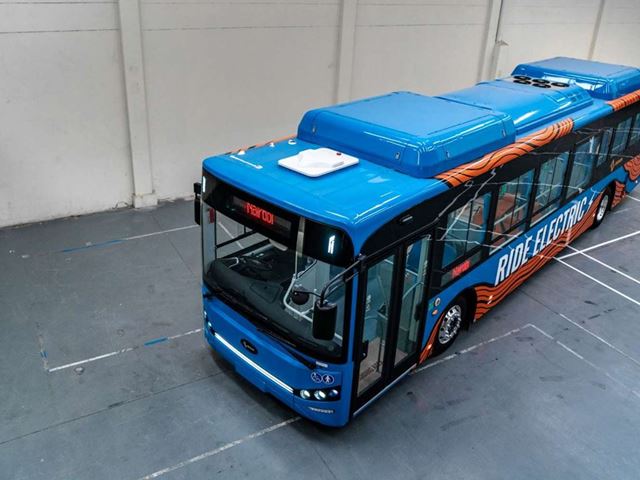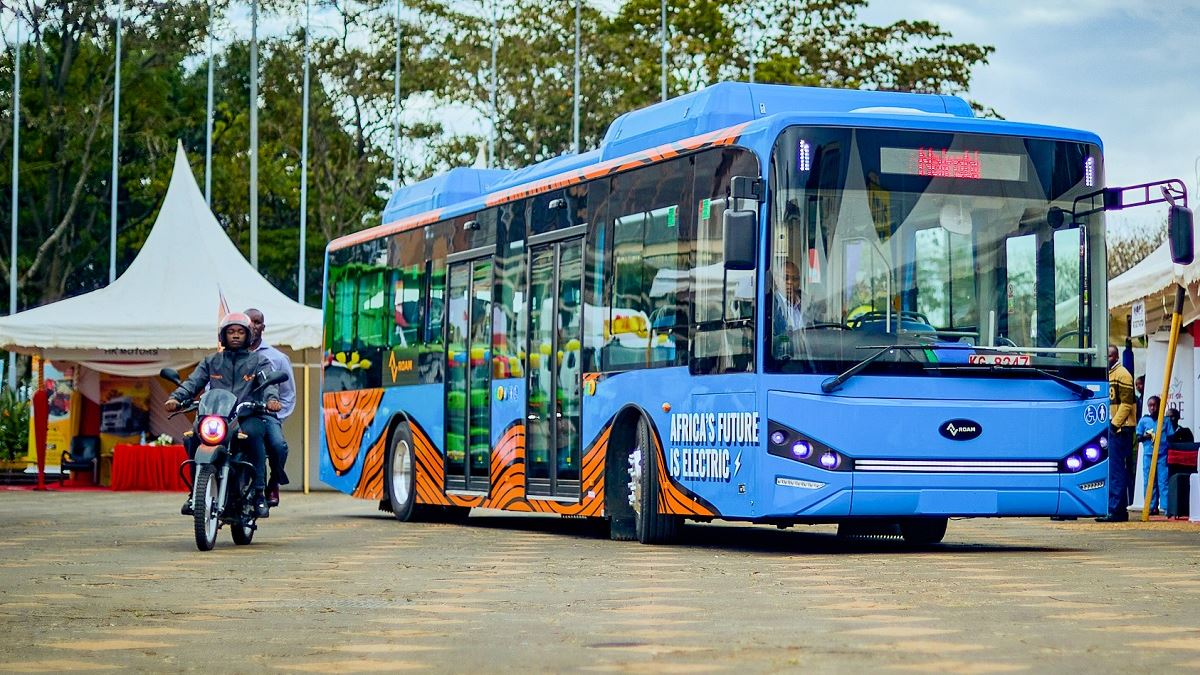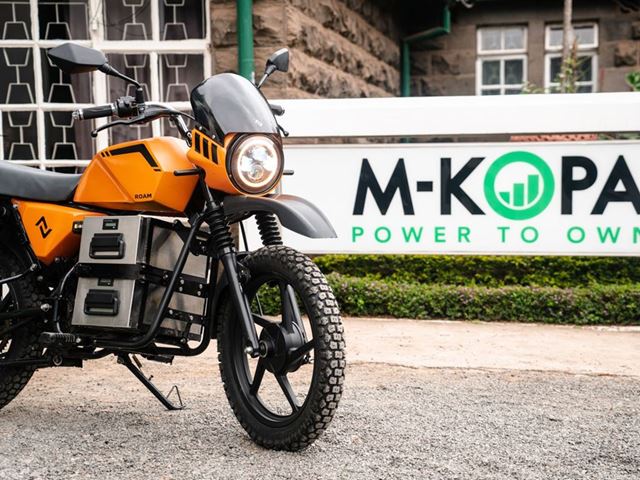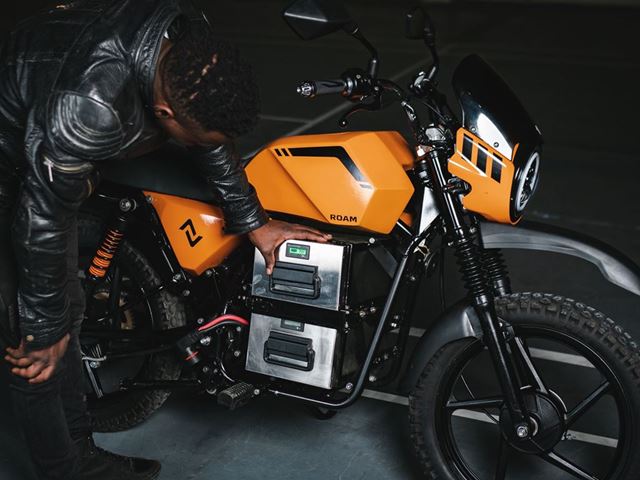
- Latest: Welcome to Auto Futures - Mobility News, Features, Exclusives and More...
- Latest: Subaru Europe Unveils the Brand's First All-Electric Compact SUV
- Latest: Lucid, Nuro & Uber Partner on Next-Generation Autonomous Robotaxi Service
- Latest: GM & Redwood Materials to Repurpose EV Batteries for Energy Storage
- Latest: Stellantis Discontinues Hydrogen Fuel Cell Technology Development Program
- Latest: Paving the way for an Electrified Future - L-Charge CEO
“There’s no Blueprint for how you Should do it” - How Roam is Developing EVs for Africa - CEO Filip Lövström
Guest Author
- Nov 30 2022

Despite emitting the smallest share of greenhouse gas globally, many African countries are committed to sustainable development. What began as a Swedish research project in 2017 - and was previously called Opibus - is now Roam, a company that focuses on developing electric vehicles catered to the specific needs of African populations. Breanna Sherman has the story.
“We started with a thesis that there’s no company that really focuses on the African continent, so that’s where we felt like we needed to build the company. Now, the company is 100% in Nairobi, Kenya, and we have approximately 150 employees,” Filip Lövström, co-founder and CEO at Roam, tells Auto Futures.
In October 2022, Roam launched operations of Roam Rapid, a zero-emissions electric bus. With this one-year project, Roam hopes to demonstrate that Kenya, the fastest growing nation in sub-Saharan Africa, can adapt to an electric public transit system.
“Our focus product are mass transit vehicles. So, vehicles that are used in public transport… And the reason we focus on these is because they have the highest impact, because they’re used all day every day. Basically, the buses operate on public transport lines, and they have pre-defined charging, which means that it’s easier to deploy them,” says Lövström.
These buses have a similar initial price to current diesel bus options, but they cost less, produce less noise, and emit less pollution.
“I think we can really make an impact both on a local level for people’s daily health because in Kenya, 20,000 people die prematurely [every year] from vehicle emissions, and then on a global level of course to ensure that we leapfrog the African continent into a new type of technology that makes more sense for this transport system,” he says.
Buses experience harsher usage conditions on the African continent and this was taken into consideration in the development of Roam’s vehicles.

Africa's Unique Challenges
The company has also developed Roam Move, a minibus that has about 50 seats and can travel about 200km when fully charged. These smaller buses are targeted towards the privately owned minibuses used as shared taxis in Kenya, known as matatus.
In 2010, the Kenyan government decided that existing matatus can continue to be used until inoperable, but no new ones can operate. Roam Move can provide a more comfortable experience for commuters and reduce costs for the drivers. Matatus also normally run on diesel, and drivers tend to leave the vehicles idling. So, Roam Move can alleviate both noise and air pollution.
“There’s no blueprint for how you should do it,” Lövström says. He goes on to explain that establishing an electric vehicle company in Africa presents unique challenges.
“We have to see what fits and adapt it for this market and ensure that our products make sense for the end users. As well as be quite creative in the business models and in how we operate because access to vehicles isn’t as high here.”
Population and urbanisation rates are growing in Africa, so the rate of automotive ownership is also likely to rise.
“We really have to focus on building vehicles that don’t take up more space on the roads, but alleviate the transport system rather,” Lövström explains.
In recent years, commercial use of motorcycles as a form of public transport has increased significantly in Africa. Roam recognises that the initial costs of any renewable energy project can be a deterrent to investors and hopes to make these vehicles as accessible as possible.
“The way we finance these is through several lease-to-own payments which is basically we work with a financing partner like M-Kopa to finance the motorcycles over a 14-month period so that we can really lower the initial cost for users to make them more accessible,” he says.

Cutting the Cost of Ownership
Roam’s electric motorcycles were designed in Kenya, specifically for the African content. Africans have turned to motorcycles for their durability, and Roam Air was designed to function in urban and rural environments. The electric motor provides instant acceleration which works for city or off-roading, and the vehicle doesn’t have a gearbox or clutch, making it virtually maintenance free and easily operable for anyone wanting to use it.
Roam Air is powered by a rechargeable battery instead of petrol, and this can cut the cost of ownership by up to 60 per cent.
Each motorcycle comes with two batteries; one fully charged battery has a 90km range, and it takes about 4 hours to fully charge a battery.
Its battery swapping system allows users to have a fully charged battery almost immediately. The portable charger can be used in any wall outlet, and the batteries can be brought inside to charge while the motorcycle is still parked outdoors.

Royal Recognition
Roam has been recognised by the international community. It's been short-listed as finalists for the EarthShot Prize Award, a global environment prize founded by the UK's Prince William and The Royal Foundation. Roam is the only African electric mobility company to be listed.
In a press statement, Albin Wilson, Chief Strategy & Product Officer at Roam, comments: "We see ourselves as innovators, leaders, and visionaries working with the urgency required to provide an alternative to fuel-based transportation that causes harm to the environment. We are addressing the source of the climate change challenge - carbon emissions - and offering electric mobility a foot to stand on."
Finally Filip Lövström offered up his thoughts and hopes on what urban mobility in Africa will be like by the end of the decade.
“Our hope for urban mobility in 2030 is that the transport system isn’t built out like you see in Western economies… but it’s more what makes sense for the users. So, public transport that carries a large amount of people to lower congestions and ensure that emissions are kept to the least, and our cities are walkable, and can use bicycles to get around most places."
"And then when you’re going longer distances you use public transport or use electric motorcycles that are lighter and less invasive in our cities,” he predicts.
Popular Categories
